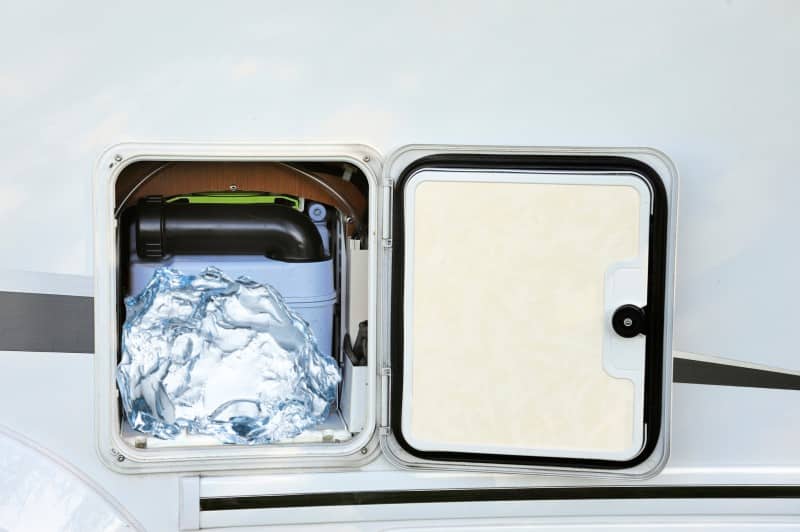
RV Water Tank Insulation
Preventing both water lines and RV water tanks from freezing in the winter can be a challenge. However, there are a few steps you can take to keep your water running all winter long. One important thing you can do is to add insulation to your tanks.
The Freshwater Tank
Fortunately, many RVs have a freshwater tank inside, often under the dinette seating. In that case, your freshwater should be fine, as long as the indoor temperature stays above freezing. To further protect an indoor freshwater tank, you can add a few layers of insulation between the tank and the outer wall.
However, if the fresh water tank is in an outside compartment, there will be a higher risk for freezing. In that case, you can purchase a water holding tank heater pad designed for RVs, and further insulate the tank with foam or reflectix. You can find RV water tank heating pads that can either run on AC or DC.
RV Water Holding Tank Heater Pad
This can be an invaluable addition to your rig if you often camp in freezing weather. The pads come in various sizes, and a heating pad that’s 12” x 18” should work on a tank up to 50 gallons. You can find pads that will run on either AC or DC electric, and they come with a thermostat.
However, it’s a good idea to keep your RV plugged into shore power during freezing weather, for a number of reasons; for one thing, your batteries will drain much more quickly during cold weather. For another thing, heating appliances can take a lot of electricity, and staying plugged in assures a constant flow.
The Gray and Black Holding Tanks
The waste tanks are usually hidden underneath the RV. A frozen waste tank means you won’t be able to dump your waste, and that means, you won’t be able to use the toilet. Obviously, this is something you need to prevent.
One way to insulate the waste tanks, and keep the RV warmer in general, is to skirt it. This prevents the cold wind from blowing underneath your RV. However, no amount of insulation will prevent the tanks from freezing if there are prolonged, freezing temperatures.
Once again, to prevent the waste tanks from freezing, before you add any more insulation, consider installing a heating pad on both the black and grey tanks. It may be more of a challenge to install these, as it could involve crawling under your rig, and pulling off the underbelly, then resealing it.
Insulation can only hold heat in, it does not provide heat. Thus, in order for insulation to work, the water (or waste) needs to be warm enough to not freeze.
Related Video:

